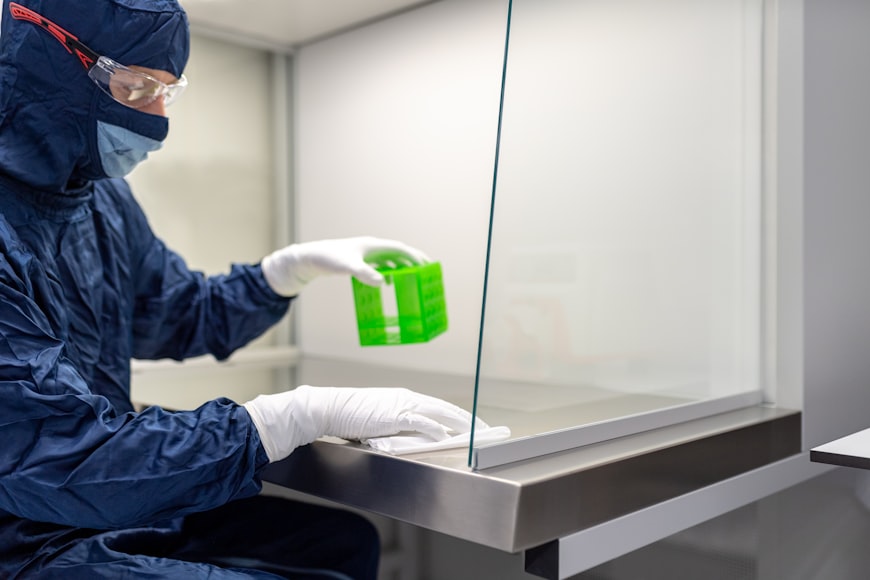Cleanrooms are highly specialized facilities that are designed to maintain a specific level of cleanliness and minimize the risk of contamination. In industries like biotechnology, pharmaceuticals, and microelectronics, cleanrooms are essential to producing high-quality products.
According to The Insight Partners, the cleanroom technology market is expected to experience significant growth in the forecast period. The report predicts that the market will reach US$ 8,356.97 million by 2028, up from US$ 5,233.63 million in 2021, representing an estimated CAGR of 6.9%.
In this article, we’ll take an inside look at the world of cleanrooms, exploring their history, design, and importance in modern manufacturing.
Table of Contents
The Evolution of Cleanrooms
Cleanrooms have come a long way since their inception in the 1940s, thanks to the pioneering efforts of the aerospace industry. Initially developed for high-tech projects like ballistic missiles and space vehicles, cleanrooms have now become a staple in many industries worldwide, where the demand for sterile and particle-free environments is paramount.
As the demand for cleanrooms grew, so did the technology and equipment used to create them. In the early days, cleanrooms were constructed using simple materials like plastic sheeting and tape. However, as the importance of cleanrooms in manufacturing and research became apparent, more advanced materials and construction methods were developed.
The pharmaceutical industry was one of the first industries to adopt cleanroom technology widely. They required a sterile environment to prevent contamination of the drugs being produced. Today, other industries such as biotechnology, microelectronics, and nanotechnology also rely on cleanrooms to maintain their standards of quality and precision.
Designing a Cleanroom
Cleanroom design is dependent on various factors, such as the industry, the product being manufactured, and the required level of cleanliness. Despite these factors, all cleanrooms share fundamental components and considerations. A critical aspect of cleanroom design is adherence to the ISO 14644 standard, which outlines the requirements for cleanroom operation and design.
This standard specifies the permissible limits for particle concentrations in the air and also mandates monitoring and testing of the cleanroom environment. Manufacturers can design and operate cleanrooms to meet specific cleanliness requirements by complying with the ISO 14644 standard, ensuring consistent production of high-quality products.
According to American Cleanroom Systems, air filtration systems are another critical component of cleanrooms. These devices remove particles and impurities from the air, giving a clean atmosphere. Furthermore, cleanrooms often maintain positive air pressure, which assures a constant flow of air out of the space, preventing pollutants from infiltrating.
Cleanrooms in Modern Manufacturing
Cleanrooms play a crucial role in modern manufacturing, particularly in industries where product quality and safety are of the utmost importance. In the pharmaceutical industry, cleanrooms are utilized for producing sterile and contamination-free drugs.
Cleanrooms are critical in microelectronics to prevent even the slightest particle from damaging high-tech components, such as computer chips. In related news, Intel has chosen Bechtel to build a new semiconductor manufacturing facility in New Albany, Ohio, as reported by Cleanroom Technology. The facility will occupy 2.5 million sq ft, including 600,000 sqft of cleanroom space.
Beyond the specific industries where cleanrooms are essential, they also play a critical role in advancing scientific research. Researchers employ cleanrooms to study topics like nanotechnology and the origins of the universe, offering them a controlled environment to conduct experiments without any interference from external contaminants.
Emerging Technologies and Innovations
As technology continues to advance, so too will the world of cleanrooms. Researchers and engineers are already exploring new technologies and materials that can improve the cleanliness and efficiency of cleanroom operations.
One emerging technology is the use of robots and automation in cleanroom operations. These technologies can reduce the risk of contamination by minimizing the number of human operators in the cleanroom. In addition, researchers are exploring new materials that are easier to clean and less likely to generate particles.
According to an article on Robots Done Right, cleanroom robots are specifically designed to meet the high cleanliness standards required for manufacturing facilities producing sensitive products. Cleanroom robots are distinct from other industrial robots and possess unique characteristics like stainless steel hardware, internal vacuums, non-gassing lubricants, and sealed compartments.
Conclusion
Cleanrooms are a critical component of modern manufacturing and scientific research, providing a controlled environment that ensures product quality and safety. The projected growth of the cleanroom technology market reflects the increasing demand for such facilities, particularly in industries such as pharmaceuticals and microelectronics.
As technology continues to advance, emerging technologies like automation and robots have the potential to improve the efficiency and cleanliness of cleanroom operations. Cleanrooms are an essential tool for scientific research, providing researchers with a controlled environment free of external contamination.
Their importance in the manufacturing industry and scientific research makes cleanrooms a vital part of advancing modern technology and improving our understanding of the world around us.


